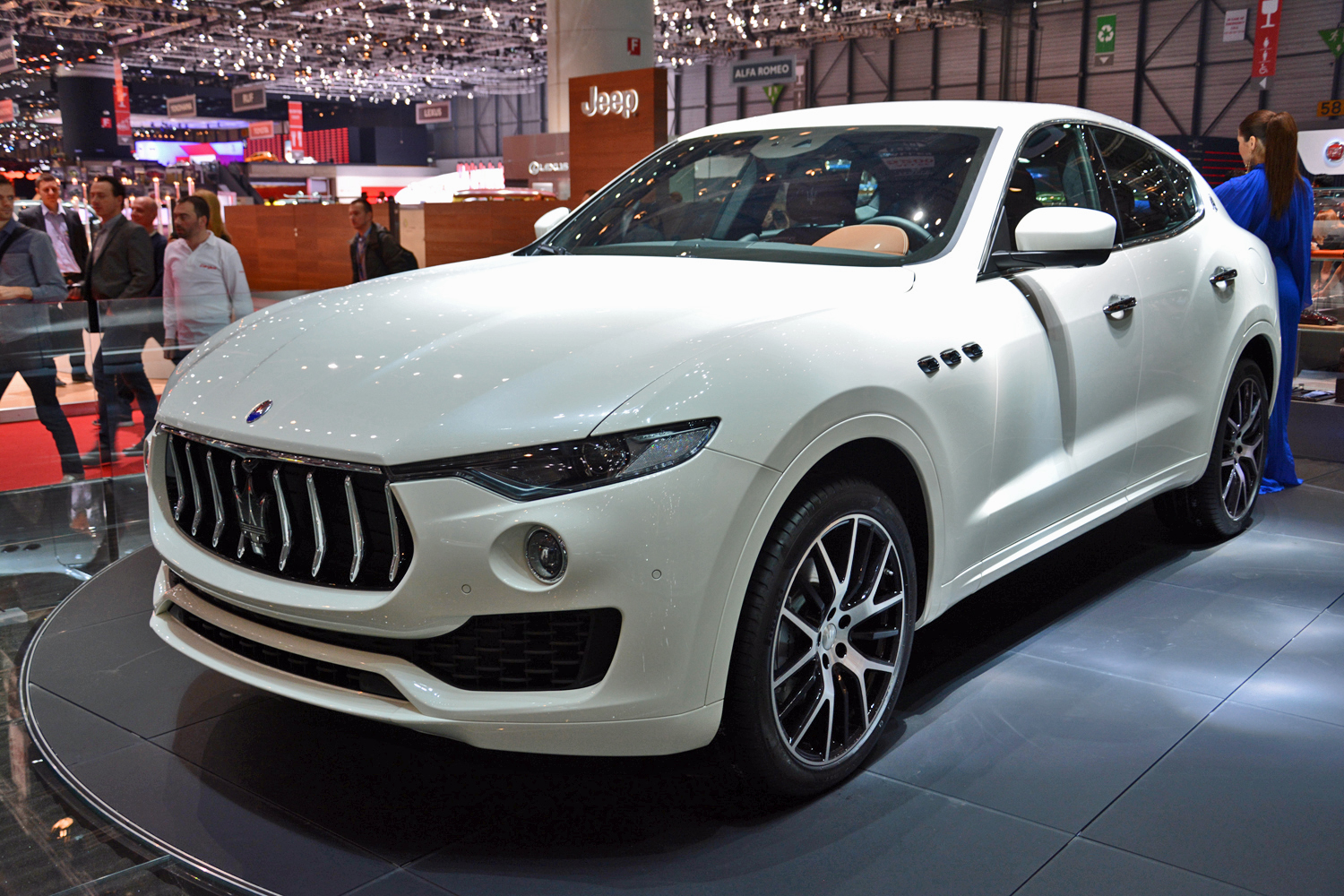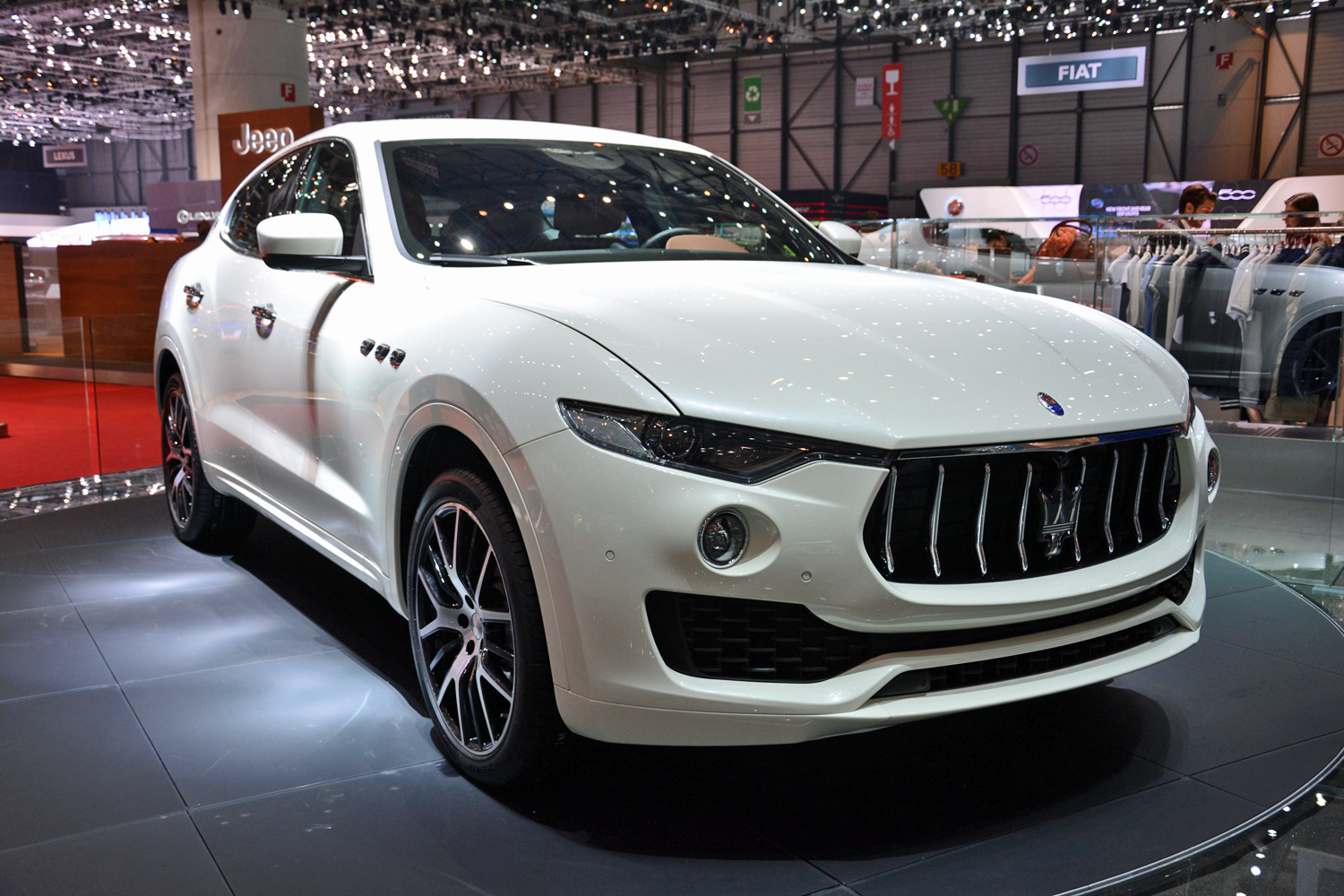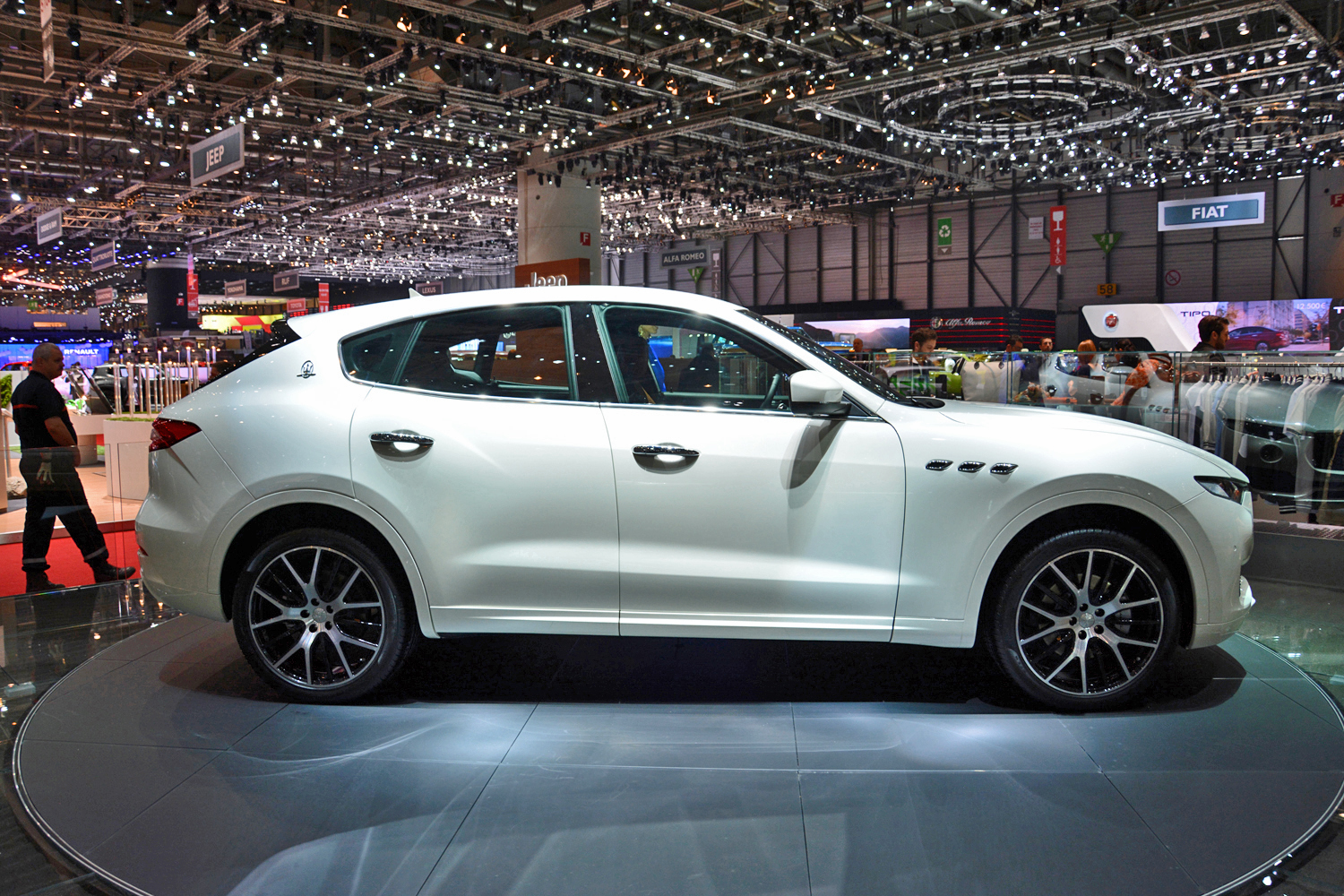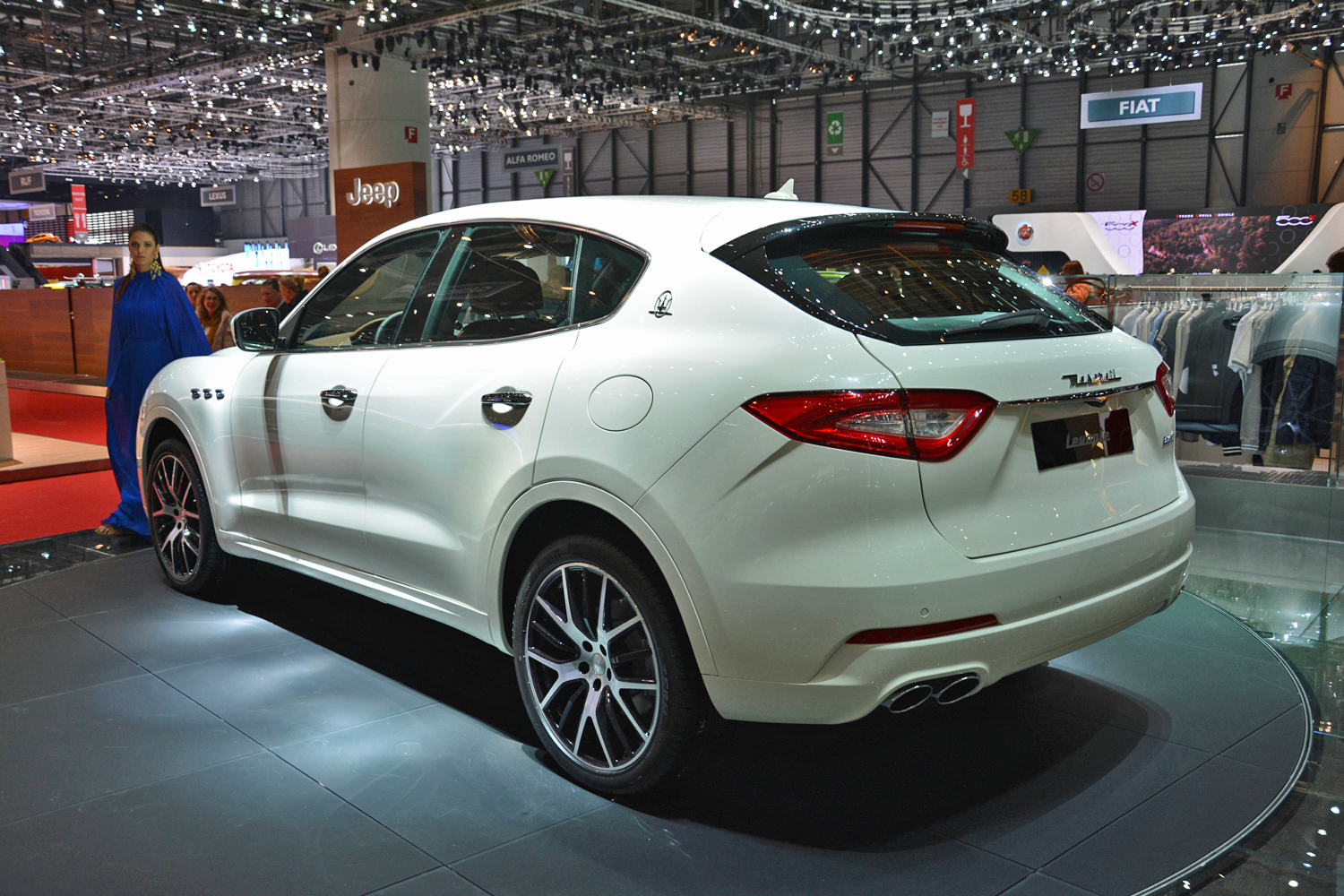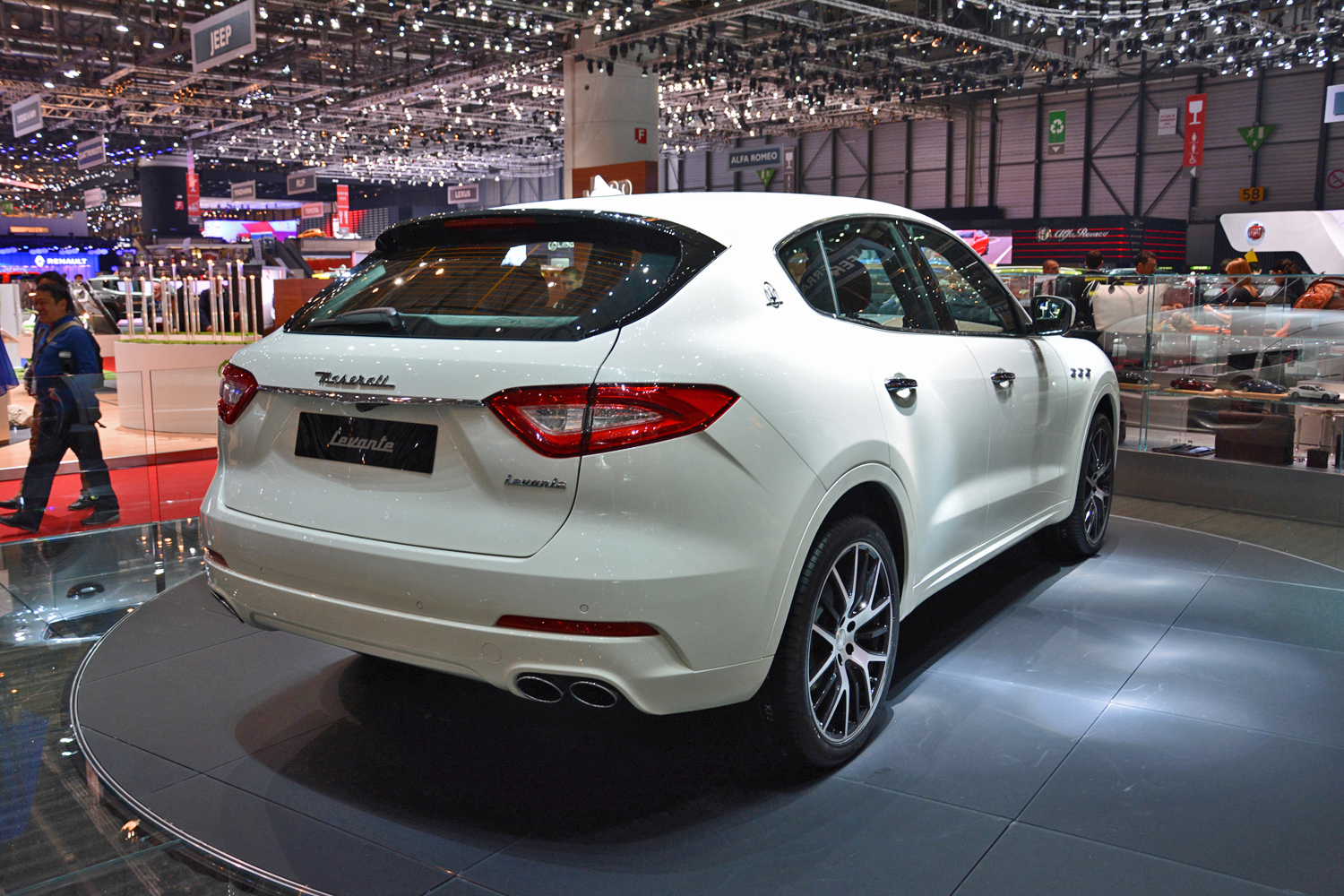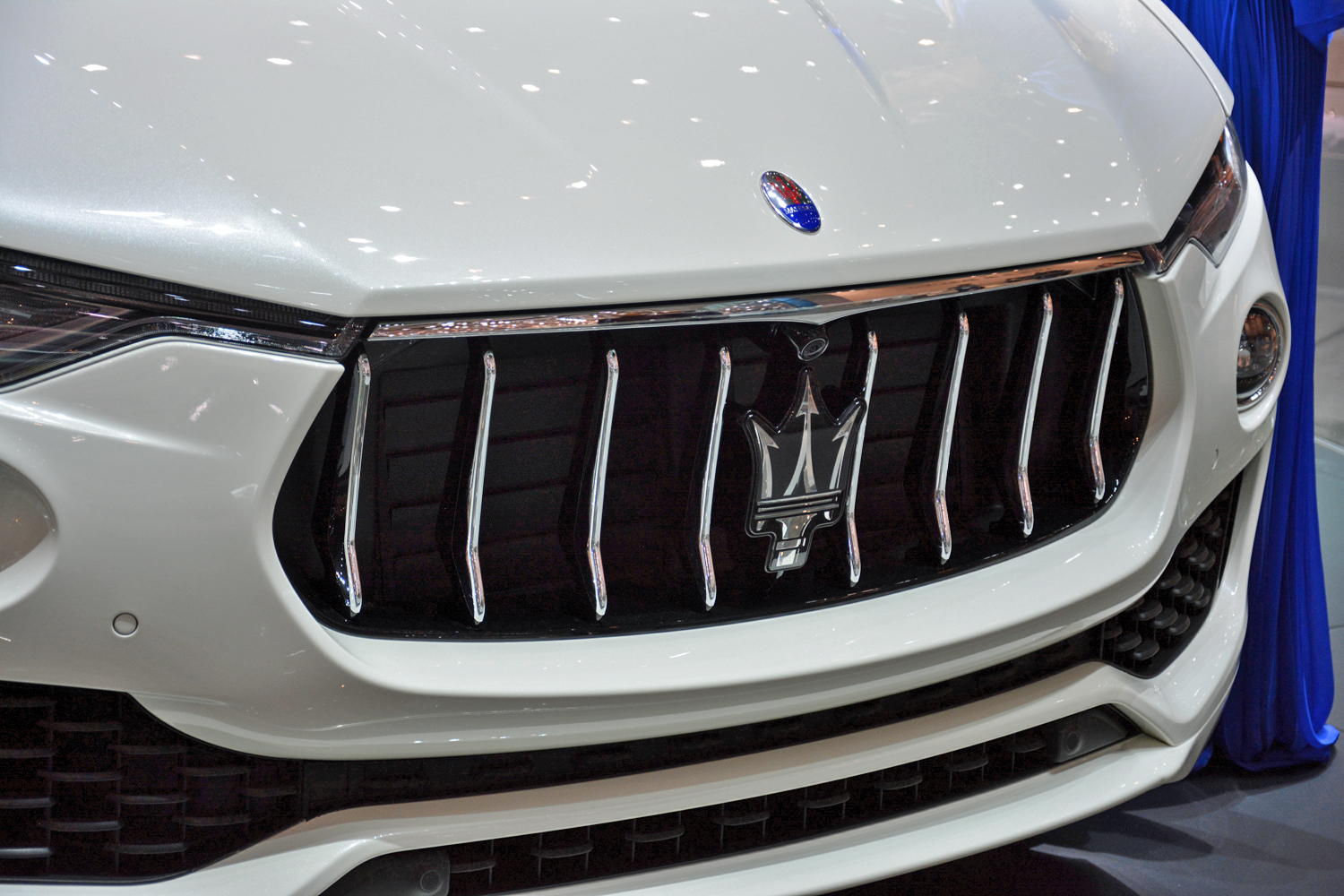In Maserati’s 101-year history, the Italian automaker has never built an SUV. In recent years, however, sports and luxury brands have turned the corner, realizing that the booming SUV and crossover segments make their bank accounts very happy, affording them the financial stability to finance low-volume performance cars and other symbols of opulence. Meet the newest entrant to the SUV class — the Maserati Levante.
Currently being showcased at the 2016 New York Auto Show, the Levante features heavy styling similarities to the rest of the Maserati lineup, which currently includes the Quattroporte, Ghibli, GranTurismo, and GranCabrio models. The narrow headlights and unique fender vents are a clear reference to the Ghibli and Quattroporte, as is the large hexagonal grill and heavily contoured hood.
From the side, the Levante looks athletic and streamlined, with pronounced rear haunches, a heavily tapered rear window, and a roofline that peaks directly above the driver. It’s a significantly different aesthetic than its main rivals, the Porsche Cayenne and Range Rover Sport, which look stocky and sinewy by comparison.
In terms of powertrains, the Levante offers three choices — a 270-horsepower turbodiesel V6 and a pair of Ferrari-built twin-turbo V6s that measure in at 345 and 424 ponies respectively. With the most potent powerplant under its sculpted hood, the Levante will prance to 60 mph in just 5.0 seconds and sound absolutely sublime doing it. Each engine will be mated to an eight-speed automatic transmission, and every model will equip the Italian brand’s Q4 all-wheel drive system.
On the handling front, Maserati’s first-ever SUV boasts a perfect weight distribution of 50:50, and the adjustable air suspension — which will come standard — offers four levels of ride height plus an additional setting for parking.
The Levante will initially launch in Europe this spring, with its U.S. debut scheduled for late summer.
